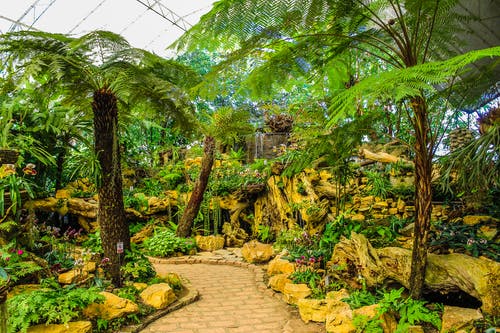There are several key aspects to consider before you begin planting, whether you are fully revamping your landscape or simply making a few tweaks. While many people rush to their local gardening supply store to peruse the options, making a plan ahead of time can help you choose plants that will meet your needs and thrive in your environment. It’s easy to get enticed into purchasing plants that seem lovely in the store, only to discover later that they are inappropriate for your setting. These pointers will assist you in developing a strategy and getting started on the path to a beautiful, coherent, and healthy landscape.
1. Be familiar with your surroundings.
When designing your landscape, consider the climate in your area, the terrain of your property, and the soil type. Keep in mind that your yard’s unique circumstances, such as the size, time of light, and shadow exposure, are likely to generate a microclimate. Microclimates are typically divided into four categories: full sun, moderate shade, shade, and deep shade. When choosing plants for your landscaping, keep in mind the microclimate. Consider the geography of your property while planning; pay attention to how water drains in your environment.

2. Pre-plan the work you want done with the plants
Determine how your plants will work in your landscape early on in the design process. Plants may give you with a variety of benefits, including fresh and tasty fruits and vegetables, gorgeous sceneries, pleasant smells, and much more. And artificial plants may be utilized as barriers to delineate sections within your landscape and to indicate where it ends. Plants may be used to create physical barriers in your environment by obstructing both views and access. Low-growing plants can be utilized to create implied barriers, restricting access but not the view, if you want to leave your views open but retain certain obstacles.
3. Pay close attention to the details.
Plants, hardscapes, and garden decorations all have distinct aesthetic characteristics, ranging from different forms and shapes to a variety of colors and textures. You may build a coherent and fascinating landscape by considering how these visual aspects might compliment and contrast one another. Consider the fragrances of the plants you choose for your landscape as well as the sights to enhance the experience you create for individuals who visit your garden. Consider when flowers will blossom and be fragrant, as well as which fragrances will blend nicely in the landscape.

4. Be sustainable
You can help protect and maintain the environment by choosing resource-efficient plants, intelligently managing water, and installing ecologically sound hardscapes. Determine if plants in your landscaping actually need to be removed or if they can be transferred to another part of your yard before removing them. Look for resource-efficient plants that use less water, fertilizer, and pesticides when buying new plants. Consider building a rainwater collection system to supply you with an environmentally friendly source of irrigation water while making improvements to your property.
Paying close attention to these tips may make the whole landscaping process a lot easier. In any case, have fun gardening and landscaping!
